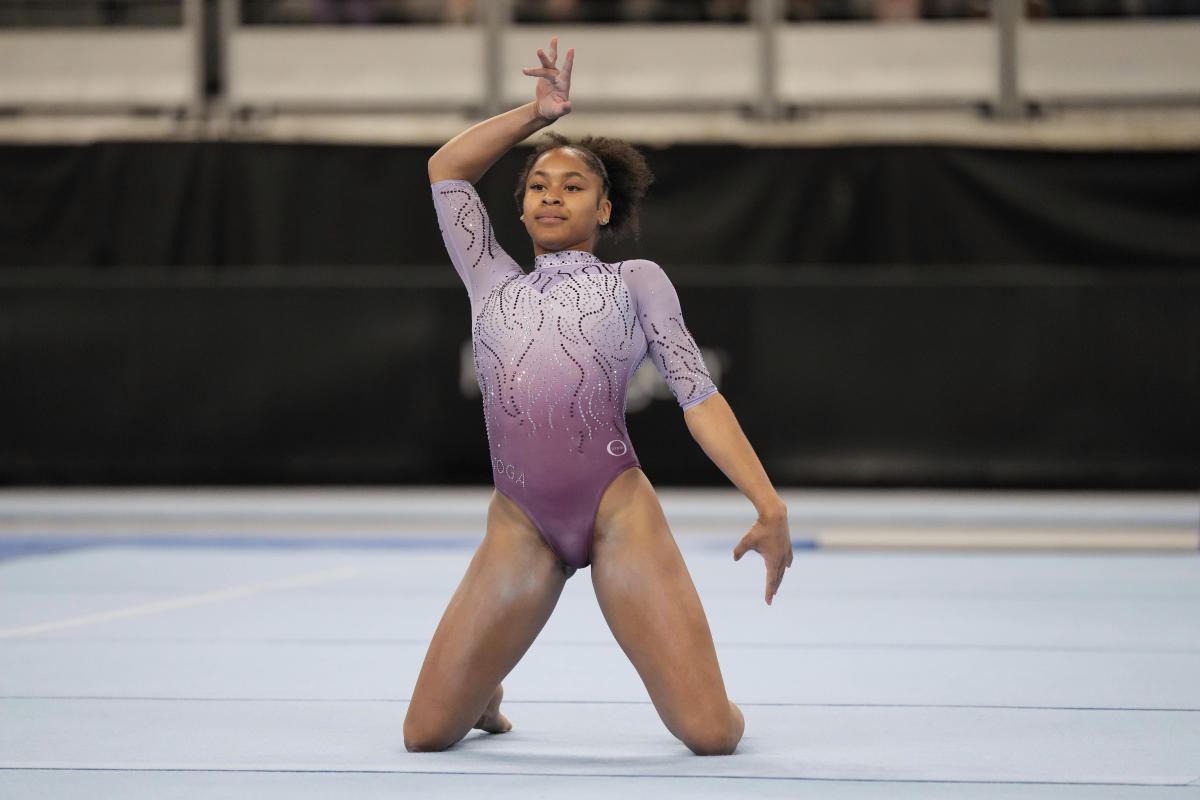Gymnastics Olympic Trials Injury Data Analysis
:max_bytes(150000):strip_icc():focal(749x176:751x178)/Olympic-Gymnastics-Team-Trials-062724-3-9ec0c1f8b62d4ec9a69db5b7becf318f.jpg)
Gymnastics olympic trials injury – The Gymnastics Olympic Trials are a highly competitive event that showcases the top gymnasts in the country. However, these trials also come with a risk of injury. In this section, we will analyze the types and frequency of injuries sustained during the Gymnastics Olympic Trials. We will also compare injury rates between different events and apparatus, and identify trends in injury patterns over time.
Types and Frequency of Injuries
- The most common type of injury sustained during the Gymnastics Olympic Trials is a sprain or strain. Sprains and strains are injuries to the ligaments or tendons, which are the tissues that connect bones to muscles.
- Other common types of injuries include fractures, dislocations, and contusions.
- The most common site of injury is the ankle, followed by the knee, wrist, and shoulder.
Injury Rates by Event and Apparatus
The injury rate varies depending on the event and apparatus. For example, the injury rate is higher in the floor exercise than in the balance beam. This is likely due to the fact that the floor exercise involves more high-impact landings.
As the gymnastics Olympic trials progressed, the air was thick with anticipation and a hint of unease. Injuries had taken their toll, casting a shadow over the competition. However, amidst the setbacks, the olympic trials results showcased the resilience and determination of the athletes.
Despite the physical challenges, they pushed themselves to the limit, their every move a testament to their unwavering pursuit of excellence. The trials served as a reminder that even in the face of adversity, the spirit of competition can never truly be diminished.
Trends in Injury Patterns
The injury rate at the Gymnastics Olympic Trials has remained relatively stable over the past few years. However, there has been a slight increase in the number of sprains and strains. This may be due to the increasing difficulty of the sport.
Injuries can strike at any moment, even during the intense competition of the gymnastics olympic trials. Despite the setbacks, athletes remain determined to push through the pain and give their all. The olympic trials schedule is unforgiving, but these dedicated gymnasts refuse to let obstacles stand in their way.
They will continue to train tirelessly, knowing that every moment spent on the mats brings them closer to their dreams.
Risk Factors for Gymnastics Olympic Trials Injuries: Gymnastics Olympic Trials Injury

Gymnastics is a physically demanding sport that requires athletes to perform complex and often dangerous maneuvers. As a result, gymnasts are at high risk for a variety of injuries.
Some of the most common risk factors for gymnastics injuries include:
- Repetitive movements: Gymnasts perform the same movements over and over again, which can put stress on their joints, muscles, and tendons.
- High-impact landings: Gymnasts often land from great heights, which can put stress on their bones, joints, and ligaments.
- Inadequate training: Gymnasts who do not train properly are more likely to get injured.
- Improper equipment: Gymnasts who use improper equipment are more likely to get injured.
- Lack of coaching: Gymnasts who do not have proper coaching are more likely to get injured.
Modifiable Risk Factors
Some of the risk factors for gymnastics injuries can be modified, which can help to reduce the risk of injury. These modifiable risk factors include:
- Training methods: Gymnasts can reduce their risk of injury by using proper training methods, such as warming up properly, cooling down properly, and using proper technique.
- Equipment: Gymnasts can reduce their risk of injury by using proper equipment, such as properly fitted shoes and mats.
- Coaching: Gymnasts can reduce their risk of injury by having proper coaching, which can help them to learn proper technique and to avoid injuries.
Prevention and Management of Gymnastics Olympic Trials Injuries
Gymnastics is a physically demanding sport that carries a high risk of injury. The Olympic Trials is the most important competition in the gymnastics calendar, and the pressure to perform can lead to athletes pushing themselves too hard and risking injury.
There are a number of things that can be done to prevent injuries in gymnasts, including:
Injury Prevention Program
- Proper warm-up and cool-down exercises
- Gradual progression of training intensity and volume
- Proper technique and body mechanics
- Adequate rest and recovery
- Nutritional support
- Psychological support
Despite taking all necessary precautions, injuries can still occur. When they do, it is important to manage them properly to ensure a quick and full recovery.
Injury Management
The management of gymnastics injuries typically involves a multidisciplinary approach, including:
- Medical evaluation and diagnosis
- Treatment protocols
- Rehabilitation strategies
- Psychological support
The specific treatment and rehabilitation strategies will vary depending on the nature and severity of the injury.
Safe and Supportive Training Environment, Gymnastics olympic trials injury
Creating a safe and supportive training environment is essential for preventing and managing injuries in gymnasts. This includes:
- Having qualified and experienced coaches
- Providing adequate training facilities and equipment
- Encouraging a positive and supportive team culture
- Promoting open communication between athletes, coaches, and medical staff
By following these guidelines, gymnasts can help to reduce their risk of injury and improve their chances of success at the Olympic Trials.
